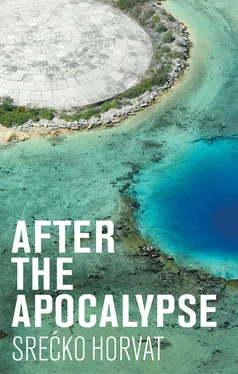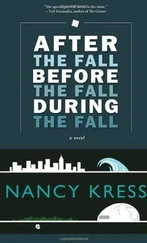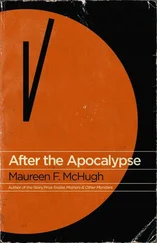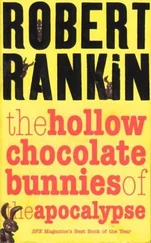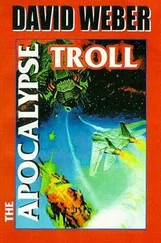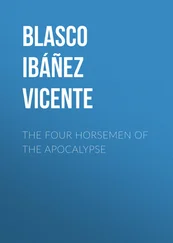1 Cover
2 Title Page After the Apocalypse Srećko Horvat polity
3 Copyright Page
4 Acknowledgements
5 Epigraph Note
6 Introduction: Nine Theses on Apocalypse The Apocalypse already happened Apocalypse as revelation The struggle for meaning Post-apocalyptic melancholy ‘Normalization’ of the Apocalypse Eschatological tipping points Extinction is ‘supraliminal’ Time beyond ‘progress’ Another end of the world is still possible Notes
7 1 Climate Crisis: Back to the Future Mediterranean On the importance of wind Solastalgia for the Mediterranean ‘Normalization’ of the Apocalypse Death of Venice Notes
8 2 The Nuclear Age: ‘Enjoy Chernobyl, Die Later’ ‘Cloud that stopped at the border’ The obsolescence of ‘ruin value’ Commodification of the Apocalypse Supraliminal radioactivity Notes
9 3 The Collision: Marshall Islands Are Everywhere ‘The ontological Garden of Eden’ The collision of the nuclear age and climate crisis The twenty-first-century pyramids Time beyond progress Notes
10 Postscriptum: ‘Revelation’ of COVID-19 ‘Wuhan is everywhere’ Eschatological tipping points The revolution of breathing Notes
11 Soundtrack
12 End User License Agreement
1 Introduction: Nine Theses on ApocalypseFigure 1: Graffiti in Minneapolis, May 2020 (photo by Aren Aizura)
2 Chapter 1Figure 2: Italy in 2100. Jay Simons, 2012Figure 3: #NoEsFuegoEsCapitalismo, by Elijo Dignidad (www.elijodignidad.org)
3 Chapter 2Figure 4: Cologne in ruins after Allied bombings, 1944Figure 5: T-shirt being sold in the Chernobyl ‘Exclusion Zone’
4 Chapter 3Figure 6: Nuclear testing at Bikini Atoll, ‘Castle Bravo’, 1954Figure 7: Nuclear waste warnings; concept art by Michael Brill, Sandia National ...
5 Postscriptum: ‘Revelation’ of COVID-19Figure 8: Graffiti on a wall in Toronto, May 2020
1 Cover
2 Table of Contents
3 Begin Reading
1 iii
2 iv
3 vi
4 vii
5 viii
6 ix
7 x
8 1
9 2
10 3
11 4
12 5
13 6
14 7
15 8
16 9
17 10
18 11
19 12
20 13
21 14
22 15
23 16
24 17
25 18
26 19
27 20
28 21
29 22
30 23
31 24
32 25
33 26
34 27
35 28
36 29
37 30
38 31
39 32
40 33
41 34
42 35
43 36
44 37
45 38
46 39
47 40
48 41
49 177
50 178
51 179
52 180
53 42
54 43
55 44
56 45
57 46
58 47
59 48
60 49
61 50
62 51
63 52
64 53
65 54
66 55
67 56
68 57
69 58
70 59
71 60
72 61
73 62
74 63
75 64
76 65
77 66
78 67
79 68
80 69
81 70
82 71
83 72
84 73
85 74
86 75
87 181
88 182
89 183
90 184
91 76
92 77
93 78
94 79
95 80
96 81
97 82
98 83
99 84
100 85
101 86
102 87
103 88
104 89
105 90
106 91
107 92
108 93
109 94
110 95
111 96
112 97
113 98
114 99
115 100
116 101
117 102
118 103
119 104
120 105
121 106
122 107
123 108
124 109
125 110
126 185
127 186
128 187
129 188
130 111
131 112
132 113
133 114
134 115
135 116
136 117
137 118
138 119
139 120
140 121
141 122
142 123
143 124
144 125
145 126
146 127
147 128
148 129
149 130
150 131
151 132
152 133
153 134
154 135
155 136
156 137
157 138
158 139
159 140
160 141
161 142
162 143
163 144
164 145
165 146
166 189
167 190
168 191
169 147
170 148
171 149
172 150
173 151
174 152
175 153
176 154
177 155
178 156
179 157
180 158
181 159
182 160
183 161
184 162
185 163
186 164
187 165
188 166
189 167
190 168
191 169
192 170
193 171
194 172
195 173
196 174
197 175
198 192
199 193
200 194
201 176
202 195
Srećko Horvat
polity
Copyright © Srećko Horvat 2021
The right of Srećko Horvat to be identified as Author of this Work has been asserted in accordance with the UK Copyright, Designs and Patents Act 1988.
First published in 2021 by Polity Press
Polity Press
65 Bridge Street
Cambridge CB2 1UR, UK
Polity Press
101 Station Landing
Suite 300
Medford, MA 02155, USA
The author wishes to thank KTH Centre for the Future of Places (CFP) and Director Dr. Tigran Haas for the research grant for the project.

All rights reserved. Except for the quotation of short passages for the purpose of criticism and review, no part of this publication may be reproduced, stored in a retrieval system or transmitted, in any form or by any means, electronic, mechanical, photocopying, recording or otherwise, without the prior permission of the publisher.
ISBN-13: 978-1-5095-4007-5
ISBN-13: 978-1-5095-4008-2 (pb)
A catalogue record for this book is available from the British Library.
Library of Congress Cataloging-in-Publication Data
Names: Horvat, Srećko, author.
Title: After the apocalypse / Srecko Horvat.
Description: Cambridge, UK ; Medford, MA : Polity, 2021. | Includes bibliographical references. | Summary: “A rollercoaster ride through the world after the Apocalypse with a simple message: either we change course or we face mass extinction”-- Provided by publisher.
Identifiers: LCCN 2020039921 (print) | LCCN 2020039922 (ebook) | ISBN 9781509540075 | ISBN 9781509540082 (pb) | ISBN 9781509540099 (epub)
Subjects: LCSH: Civilization, Modern--21st century. | Regression (Civilization)
Classification: LCC D862.3 .H67 2021 (print) | LCC D862.3 (ebook) | DDC 909.83/2--dc23
LC record available at https://lccn.loc.gov/2020039921
LC ebook record available at https://lccn.loc.gov/2020039922
by Fakenham Prepress Solutions, Fakenham, Norfolk NR21 8NL
The publisher has used its best endeavours to ensure that the URLs for external websites referred to in this book are correct and active at the time of going to press. However, the publisher has no responsibility for the websites and can make no guarantee that a site will remain live or that the content is or will remain appropriate.
Every effort has been made to trace all copyright holders, but if any have been overlooked the publisher will be pleased to include any necessary credits in any subsequent reprint or edition.
For further information on Polity, visit our website: politybooks.com
To write a book about the Apocalypse even as it is in the process of unfolding makes an already difficult task even harder. We are all living through it, deeply entangled and personally shaken by its ‘revelations’, engulfed by its warnings and, yet, the attempt to imagine the unimaginable, to grasp the ‘supraliminal’, needs to be taken if we are to understand what is at stake, namely extinction. This book is not only an attempt to bridge these two tensions – overwhelming reality and the reality that is to come – it is, like every book, also a product of these times. I started to write it on the island of Vis, as a sort of continuation of my previous book
Читать дальше
